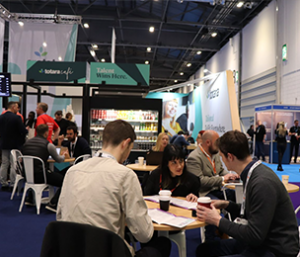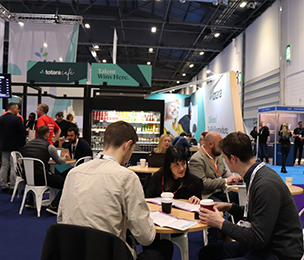I think we can all agree that the world around us is filled with the acrid scent of FUD—fear, uncertainty, and doubt. Change is fast and unpredictable in less tangible ways than just a few years ago. It may not have felt like it at the time, but we had more time to breathe, think, and act than it seems we do today.
Why is this?
Well, it’s the apparent effects of exponential change writ large. It starts imperceptibly slow and gathers speed dramatically as the curve heads vertically. We are all frogs standing in slowly boiling water, unable to take action and jump out. No more—it’s time to change that narrative.
As workplace learning professionals, we are at the sharp end of this endless change. We face the seemingly Sisyphean task of empowering our people to do their best work while buffeted by stinging gales of economic forces, pivots in business strategy, rapid growth, rapid rationalisation, and new rules and regulations to comply with, seemingly all in one week. While technology is driving much of this change, it is also the critical foundation on which we build the learning experiences that sustainably maintain our people’s skills, knowledge, and adherence to sound, compliant best practices for our businesses to remain solvent, relevant, and competitive.
What not to do
We are all in awe of the promise of artificial intelligence (AI). But before you dive in, we must remember that we have been here before with rapid authoring tools, microlearning, and LXPs. Each of these is meant to solve all our problems and save us production and consumption costs so we can deliver more learning to more people at more times. As if that is the primary goal. But there is a genuine danger we fall into the same GIGO trap. More rapid – even instant – Garbage In is still Garbage Out.
The past 12-18 months have seen an explosion of AI applications, many of which are a thin veneer of what will be possible in the next 6-12 months—it is moving that fast. Currently, many thinly spun sugar and candy floss solutions will help you produce more GIGO if not carefully managed.
Our skills as learning and performance experts have never been more critical in harnessing these tools with intention and meaningful impact. But to do so, we have to break out of our silo and engage more effectively with the rest of the HR team and the wider business.
A unified learning experience
Put yourself in the position of your audience. It is likely that collectively, the leadership, management, HR, and learning functions are bombarding your employees with conflicting calls on their attention and time. They are often one-size-fits-no-one requests that are blind to each person’s experience, context, and needs. When you look at this through the lens of behavioural psychology, you will be horrified to see that the collective result is the opposite of your intention – you are training people to ignore you.
To rectify this, a holistic approach that considers all the researched underpinnings of what sustainably motivates and engages people at work is required. Without these in place, no learning sticks, behaviours resort to old habits and norms, and the business doesn’t benefit.
So what does good look like?
There are five key questions that every person in your organisation is asking themselves, which require an affirmative answer. Only then will they remain confident, high-performing collaborators and contributors.
- What tools and resources do I need to do my job, and can I find and use them effectively?
- Do I know the company/team goals and objectives and how they relate specifically to me and my role?
- Am I receiving timely, constructive feedback on my work?
- Can I invest time in a personalised development path that will improve my skills within my current role and set me up for further career progression?
- Will my views and opinions be valued and listened to by my managers and peers?
Designing every learning programme with these questions ensures we consider context, not just content. Any new knowledge, skill, and subsequent behaviour change sits within this wider working environment. It is a key reason why many learning initiatives fail to have the intended impact. There is a shrinking window to succeed in this exponential age as the change cycle accelerates.
Where do I start?
As L&D teams, we are at an exciting juncture. We will be swinging the see-saw away from content consumption (in all its forms, simple to simulation) towards support and enablement, all designed to demonstrably improve performance and achieve business goals. To do this requires working collaboratively with HR peers and business leaders to build robust, measurable business cases that will deliver a tangible return on investment.
Compliance is a universal area where you can deliver immediate impact. Looking beyond “tick-in-the-box” responsibility shifting, you will see real opportunities to drive behavioural improvements that demonstrably reduce business risk and costs. By redefining compliance to be more than regulatory, including establishing consistent application of best practices at scale, your leadership teams will be taking notice. L&D has moved from being perceived as a nice-to-have-in-the-good-times cost center to now being regarded as a positive agent of improved business performance.
Master technology intelligently
Most applications of technology in all parts of a business will have much room for improvement. So, you will be supported when you review your own ecosystem of tools to find redundancy, neglect, misuse, and poor data integrity. A more holistic approach to empowering your people to do their best work requires a more unified technology infrastructure, integrated technically and into the fabric of each person’s everyday working experience. Check that you can seamlessly deliver learning experiences with meaningful feedback, evidence, application, and collaboration. This often straddles several systems that could be rationalised or better integrated.
Use AI to support, not lead, the design process, accelerate content and media production, and create time and space for you to concentrate on the more formidable challenges of supporting people and putting new skills/knowledge into practice. Use assistive technology to help people find the tools and resources they need at the time and point of need, provide intelligent guidance on completing real tasks, and provide coaching at scale through development programmes.
There are so many opportunities for us to optimise for a faster future. People will need higher levels of resilience and adaptability. We can shape a working environment that is both high-performing and sustainable.
References
- To learn more about The Exponential Age – read Azeem Azhar’s book. It sets the scene for the world in which we now live.
- Read The Next Rules of Work by Gary A. Bolles for a blueprint on how to redesign an HR function for businesses operating within an uncertain environment (that’s all of us).
- Download Totara’s Learning with Impact Toolkit. A practical checklist to help ensure all learning experiences are wedded to real outcomes.




